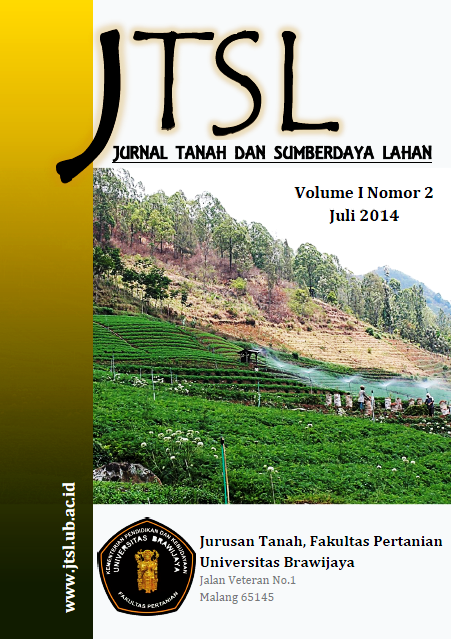ESTIMASI DISTRIBUSI SPASIAL KEKERINGAN LAHAN DI KABUPATEN TUBAN MENGGUNAKAN PENGINDERAAN JAUH DAN SISTEM INFORMASI GEOGRAFIS
Abstract
Increase population of people who followed by increasing need for people every year, can indirectly lead to landuse changes and global climate changes. Landuse changes and global climate changes can lead to dryness of the land. Droughts can be analyzed with remote sensing and GIS (Geographic Information Systems). This research is to predict spatial distribution of land droughts and its area using remote sensing and GIS technology based on soil moisture. The research was conducted in Tuban, East Java in January 2013 - April 2013. Method used in this research is a statistical approach using nonlinear regression analysis between index (NDSI, NDVI, NDWI) with a water content of soil moisture estimation models to get the land area of Tuban which is then used as a basis for spatial interpolation. Estimation the distribution of land drought is analyzed based on validation data from soil moisture imagery with pF 2.5 and pF 4.2. Extrapolation of the data is carried out by Land Unit Map pF, then classified into three classes, namely class dry (wilting point condition), humid class (available water content), and wet grade (water saturated). Results show the Permanent wilting point condition is most commonly found in almost all districts with an area of Tuban 109,111.05 ha or 55% of the total area of Tuban. Water conditions are available are found in the west as in the district of Tuban regency Kenduran and Jatirogo and has an area of 20861.82 ha or 11% of the total area of Tuban. While the water saturated conditions are found in the District Plumpang, Widang, and Cross and has extensive 8951.22 ha or 4% of the overall total of Tuban.Keyword: water content, remote sensing, GIS
Downloads
Published
How to Cite
Issue
Section
License
The copyright of the received article shall be assigned to the journal as the publisher of the journal. The intended copyright includes the right to publish the article in various forms (including reprints). The journal maintains the publishing rights to the published articles.

This work is licensed under a Creative Commons Attribution-NonCommercial 4.0 International License.













